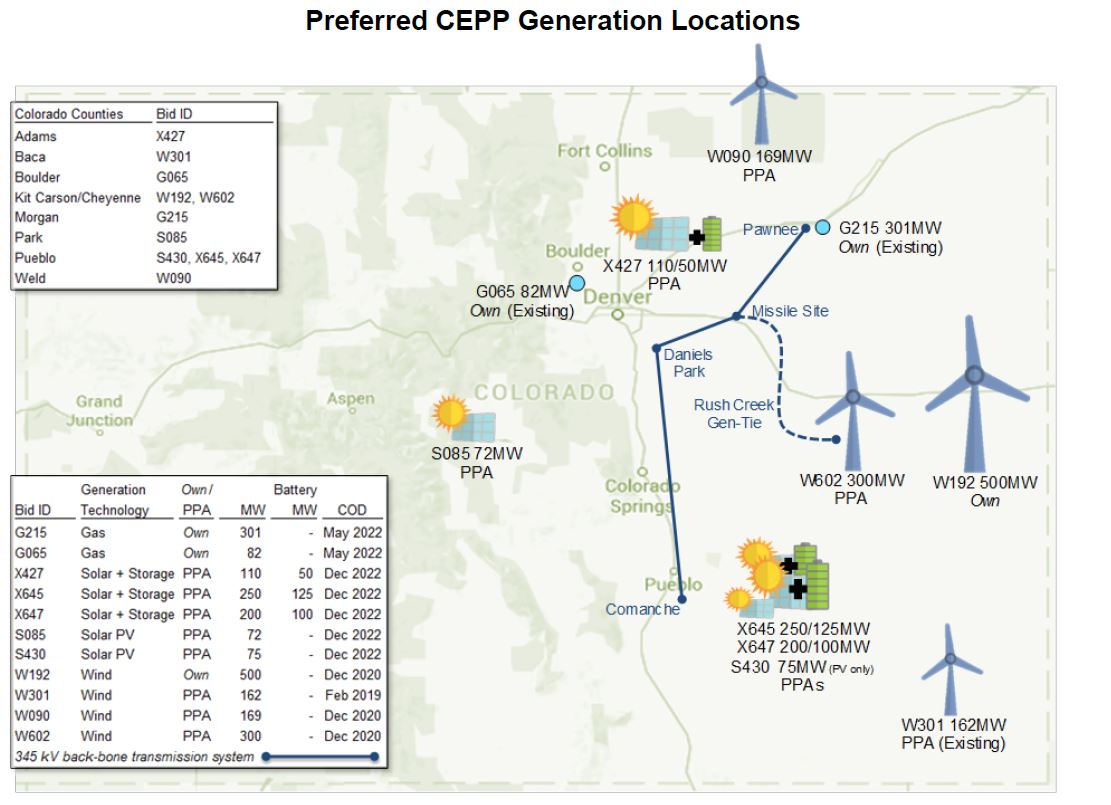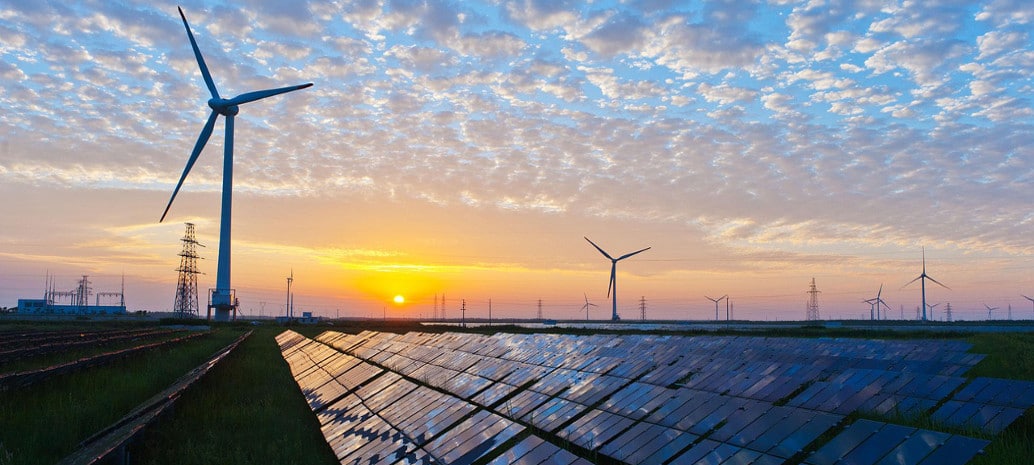Back in the quaint days of late 2017, the world was awoke by a batch of bids of momentous size – and shockingly low pricing – in a solicitation by Xcel Energy. In fact, the median bid on 16 GW of solar+storage came in at only 3.6¢ per kilowatt-hour (kWh). This price was only 0.65¢/kWh more than the 30 GW of solar-only bids.
For perspective’s purpose – according to the EIA, in 2016 either operations or maintenance for ‘fossil steam’ electricity sources were above 5¢/kWh for existing facilities across the USA. This is before fuel costs estimated at an average of 2.5¢/kWh.
Yesterday saw the close of another public step in this proposal process. And while we no longer have 30 GW of solar power to salivate over, there are serious volumes being proposed to go in service by 2023.
In the proposal, 2016 Electric Resource Plan, 120-Day Report (PDF), Xcel Energy has put forth a extensive financial analysis on multiple potential paths forward for its service area in the state. The ‘Preferred Colorado Energy Plan Portfolio’ (CEPP) contains the largest amounts of solar power.
The plan features a total of five solar power plants, three of which include include energy storage. Three of these plants – 525 MW-AC worth of solar and 225 MW/ 900 MWh of energy storage – are located in the Pueblo region. One of these plants is solar only. A single 72 MW-AC solar plant is located in Park, the western part of the state. And a 110 MW-AC solar plant plus 50MW / 100 MWh of energy storage is located in Adams.

The individual solar power project range in capacity from 72 to 250 MW. The individual energy storage projects range from 50 to 125 MW, with two and four-hour ratings. The total solar to be deployed under this plan would be 707 MW-AC, with 275 WM/1,000 MWh of energy storage.
The Preferred CEPP notes that it is accelerating some solar power deployment to take advantage of the federal Investment Tax Credit. Xcel Energy projects that taking advantage of the timing would save customers $20 million, and close 380 MW of coal (Commanche I & II) up to 10 years early. The utility said the opportunity offered ‘unprecedented pricing.’
The solar power bids ranged from 2.3-2.7¢/kWh, while solar plus storage ranged from 3.0-3.2¢/kWh. While it makes for an imperfect comparison as solar project costs vary, the solar vs solar+storage delta is 0.5-0.8¢/kWh.
Even more eye popping was the wind power pricing that ranged from 1.1-1.8¢/kWh.
The documented referenced the Section 201 tariffs, and that it needed to get all solar power bids resubmitted due to the increased pricing of solar panels. However, this does not mean that project prices necessarily increased. As noted by the utility:
Of these responses, 58% of the bids affirmed no change in pricing, 16% increased pricing, and 26% decreased pricing.
If any of these large solar+storage projects are NextEra owned, we could see DC:AC ratios up to 1.65, meaning the DC size of these projects is probably between 919 MW-DC to 1,166 MW-DC.

If the Preferred CEPP plan is implemented, it would see the utility move from 28% renewables as of 2017, to 53% by 2026. The most important piece of all of this are deep emissions reductions. By 2026 generation serving Xcel’s Colorado customers would emit nearly 60% less CO2 and 90% less SO2 and NOX, compared to 2005 levels.
And this is coming at a bargain for utility customers. When these bids came out back in January, CarbonTrack.org noted that at 3.6¢/kWh for solar+storage 74% of coal would be would priced higher. With the new pricing of the solar+storage turning out to be 3.0-3.2¢/kWh – 100% of coal powered generation is now more expensive.
Despite efforts of the #Trump Administration, it seems #coal is not coming back
Dramatic declines in storage costs means Colorado has just seen the lowest #renewables+storage bids in the US to date – cheaper than most operating coal capacity in the regionhttps://t.co/64sKY7tmXA pic.twitter.com/JCqgrtK04e
— Carbon Tracker (@CarbonBubble) January 5, 2018
Lazards most recent Levelized Cost of Energy Analysis suggests new coal costs between 6-14.3¢/kWh.

Back in 2015 Jim Robo, the CEO of NextEra Energy, said, “Post-2020, there may never be another peaker built in the United States — very likely you’ll be just be building energy storage instead.”
This content is protected by copyright and may not be reused. If you want to cooperate with us and would like to reuse some of our content, please contact: editors@pv-magazine.com.










By submitting this form you agree to pv magazine using your data for the purposes of publishing your comment.
Your personal data will only be disclosed or otherwise transmitted to third parties for the purposes of spam filtering or if this is necessary for technical maintenance of the website. Any other transfer to third parties will not take place unless this is justified on the basis of applicable data protection regulations or if pv magazine is legally obliged to do so.
You may revoke this consent at any time with effect for the future, in which case your personal data will be deleted immediately. Otherwise, your data will be deleted if pv magazine has processed your request or the purpose of data storage is fulfilled.
Further information on data privacy can be found in our Data Protection Policy.